GCSE Classics student, Juno Butler-Cole, aged 15, tells the tale of her journey around ancient Greece with her school
When my enthusiast Year 10 teacher Mr Holt mentioned a Classics trip to Greece with the school, I loved the idea of signing up. As the departure date loomed however, my enthusiasm for the trip could be summed up in one word, dismal.
My thinking went along the lines of this, on Friday, when everyone else was breaking up for lazy Easter holidays, I would be waking up at 2.15am to catch a coach to the airport for a week of intense travel schedules and intricately-planned learning. Just wow!
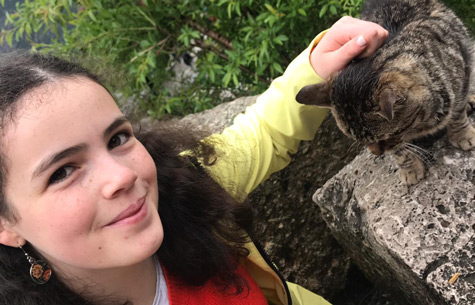
Juno begins her Classics tour in Athens
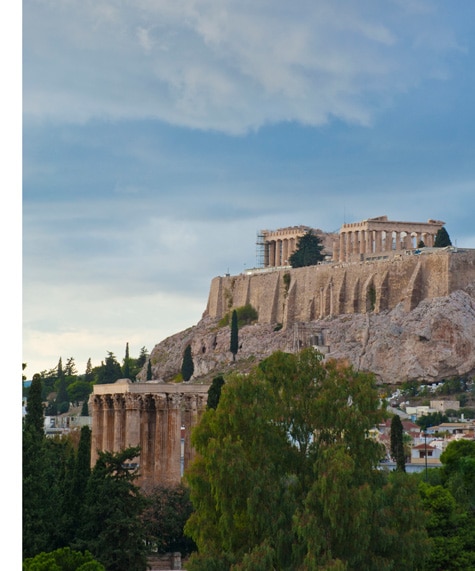
The Acropolis, Athens
Well it turns out I was wrong. The week went by far too quickly and honestly solidified my understanding of the classical world, most notably its culture and architecture. The trip really kicked off with a highlight; the renowned Acropolis which sits proudly in the centre of the Greek capital of Athens. Everyone was overtired, the warm rain was spitting down on optimistically bare legs and the Panathenaic way to the Acropolis was steep and long. It was hard to imagine that the Greeks would have carried huge wooden statues of Athena all the way up to the top during the great Panathenaic procession. But truly the view from the top alone was worth it over the entire sandstone and white city of Athens. Of course, the Parthenon was what we had come to see, and it was breath-takingly huge. From here commenced the first of many games of spot the temple! Our Classics teacher Mr Holt would shout out a question about the temple style and it was truly heart-warming to see ‘cool’ kids and ‘nerds’ alike screaming ‘Doric’ at the top of their lungs – no volutes or bases you see!
Our next stop was impressive Acropolis museum. This vast, modern building’s main hall mirrors the exact angle and shape of the Parthenon’s main naos, and the metopes and friezes are laid out in the exact way they would have been in the temple thousands of years ago.
After a four-hour drive inland, we visited the well-known sanctuary of Apollo at Delphi. The ‘belly button of the earth’, where we drank from a healing spring, quite fitting for the sanctuary of Apollo, the God of Medicine. The trip progressed from one incredible view to another, but if I was giving out prizes it would have to go to the Valleys of Delphi. Standing in an old amphitheatre at the top of the site of Delphi above the fabled rock where the oracle would give her prophecies, I have never felt more connected to an ancient civilisation and its completely crazy customs.
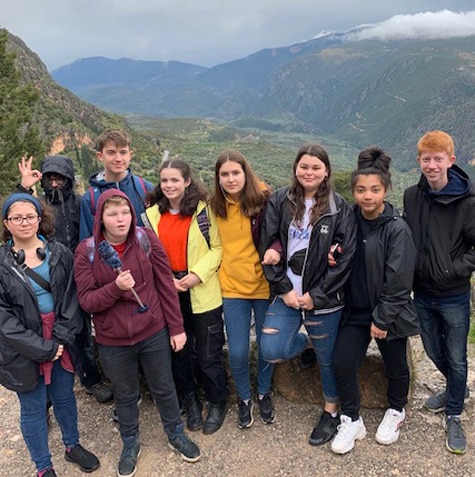
Juno (centre) with her classmates at Delphi
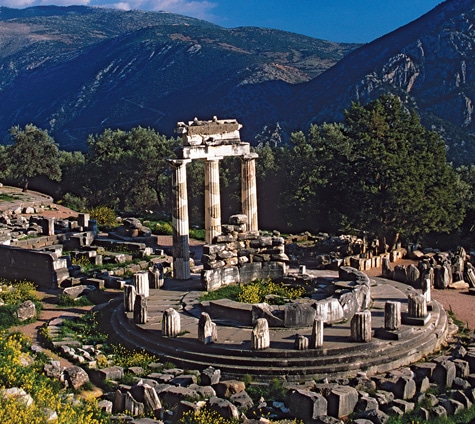
The spectacular Temple of Apollo
Once again, the huge marble museum at the bottom of the site was well worth a visit to see all the artefacts found during excavations, which gave you a better capacity to imagine the exact scenes of 8thand 7thcentury BC Greek life.
Next on our crowded itinerary was a somewhat brief visit to the ancient sanctuary of Olympia where the Temple of Zeus stands, if such an upright word can be applied to the jumble of prostrate columns lying around on the grass. It turns out columns are not in fact a single block of stone, but rather several discs stacked on top of each other and chipped into shape later, which leads to a domino effect when the columns topple after millennia.
The whole point of the trip was really brought into perspective when later in the museum I spotted a section of metopes from the Temple of Zeus which we had studied for three lessons the previous term. We all felt wow, these colossal square stone blocks are in my text book and I’ve got so bored looking at them lesson after lesson, and now here they are right in front of me, and I can actually make out the detail. Real life beats the school’s bad quality photocopies any day! And of course when our teacher, Mr Holt fell over and got covered in mud on the ancient racetrack later, everything seemed worth the long travel!
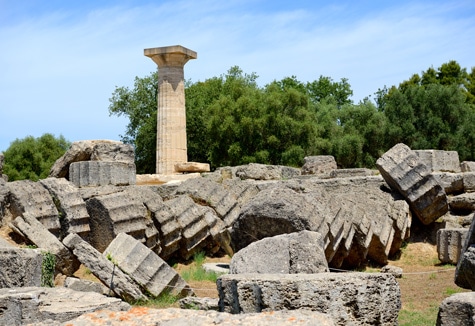
Seeing the Temple of Zeus metopes in real life
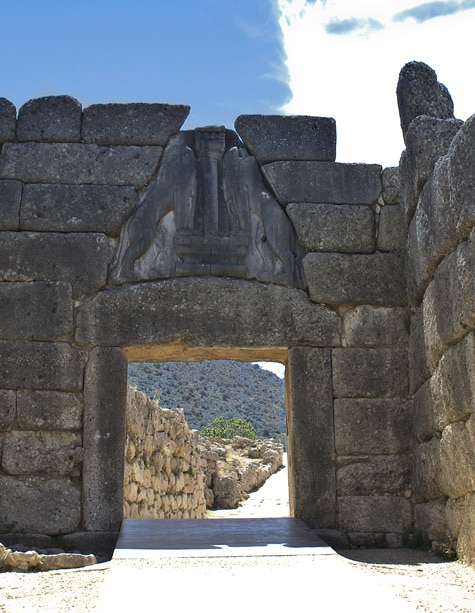
Art meets Classics at the Lions Gate at Mycenae
I can’t talk you through absolutely everything we did because our teachers really crammed the poor itinerary with dozens of sites. I think we must have visited about every single classical site in the whole of Greece! But as highlights go, the ancient Mycenaean ruins were really something else. They were the oldest sites we visited and spectacularly there was a fully intact arched hallway in Tiryns, a city destroyed by an earthquake, that was still standing!
The trick is evidently a technique called corbelling, a bit like an igloo but with stone, which has lasted longer than any of the thick walls. In the actual city of Mycenae, we got to walk through the iconic Lion Gate where art meets classics as the world’s first evidence of monumental sculptures. To top it all off, we explored the 18-metre deep tunnel that led to the Mycenaean’s water supply (corbeled again), that anticlimactically led to a small puddle where the unprepared got their trainers wet and others with sturdy walking boots laughed and started the 86 steps back to the surface, all the time being sporadically dripped on by musty rock water.
All my pre-trip apprehension turned out to be completely pointless. This was one of the best adventures I have ever been on. I was surprised how much it actually felt like a holiday rather than a school trip. It worked so well due to the meticulous planning by the school with just enough down time to keep us all relaxed yet engaged, plus, the children and teachers were such wonderful people.
As someone who never imagined an educational trip as fun or easy-going, this journey through ancient Greece proved me wrong a thousand times, and gave everyone on the trip a new and fresher understanding of Classical civilisations. What better to secure your knowledge of a topic than to actually visit the place where it all happened?

Greece and its beautiful and ancient views